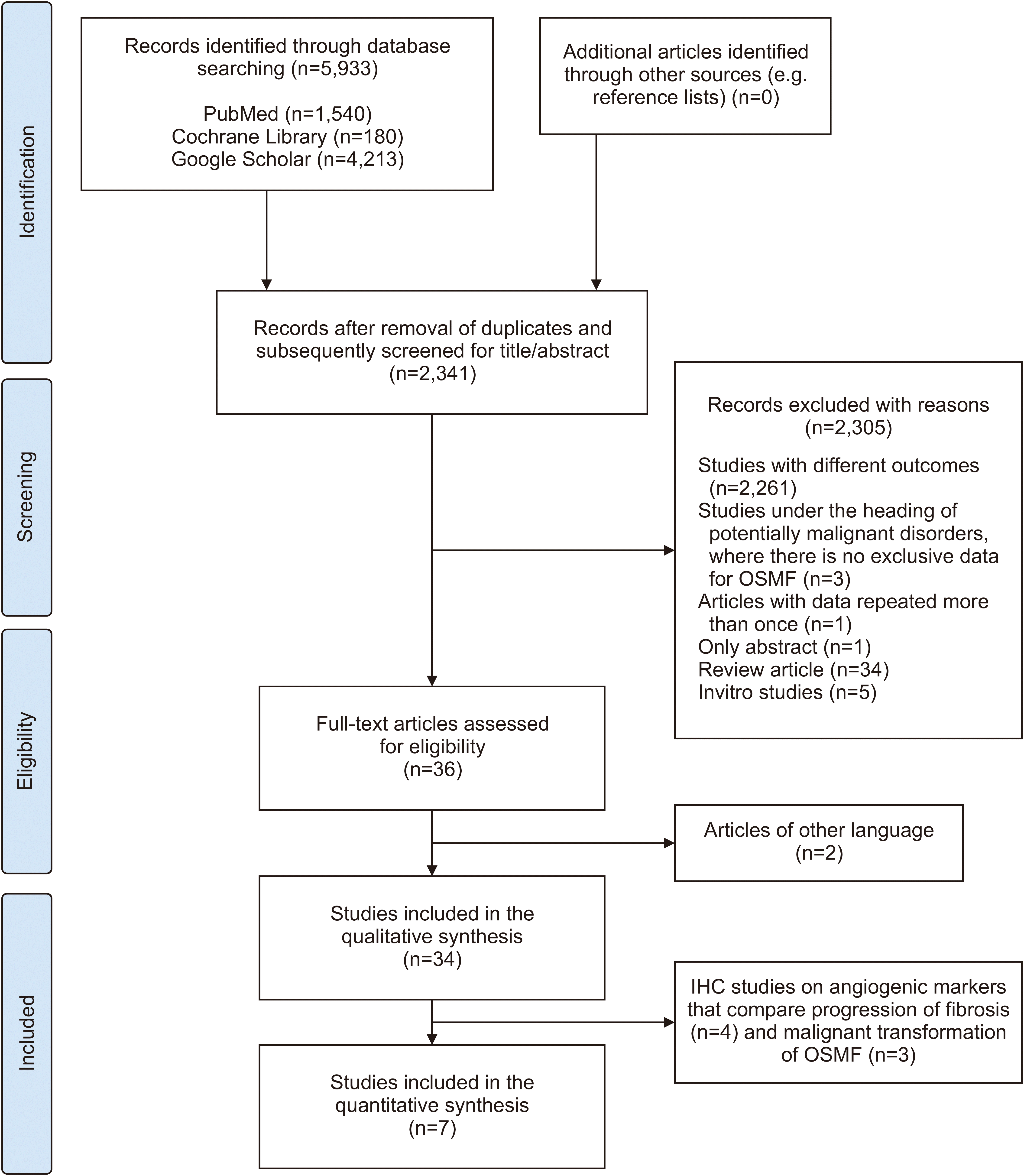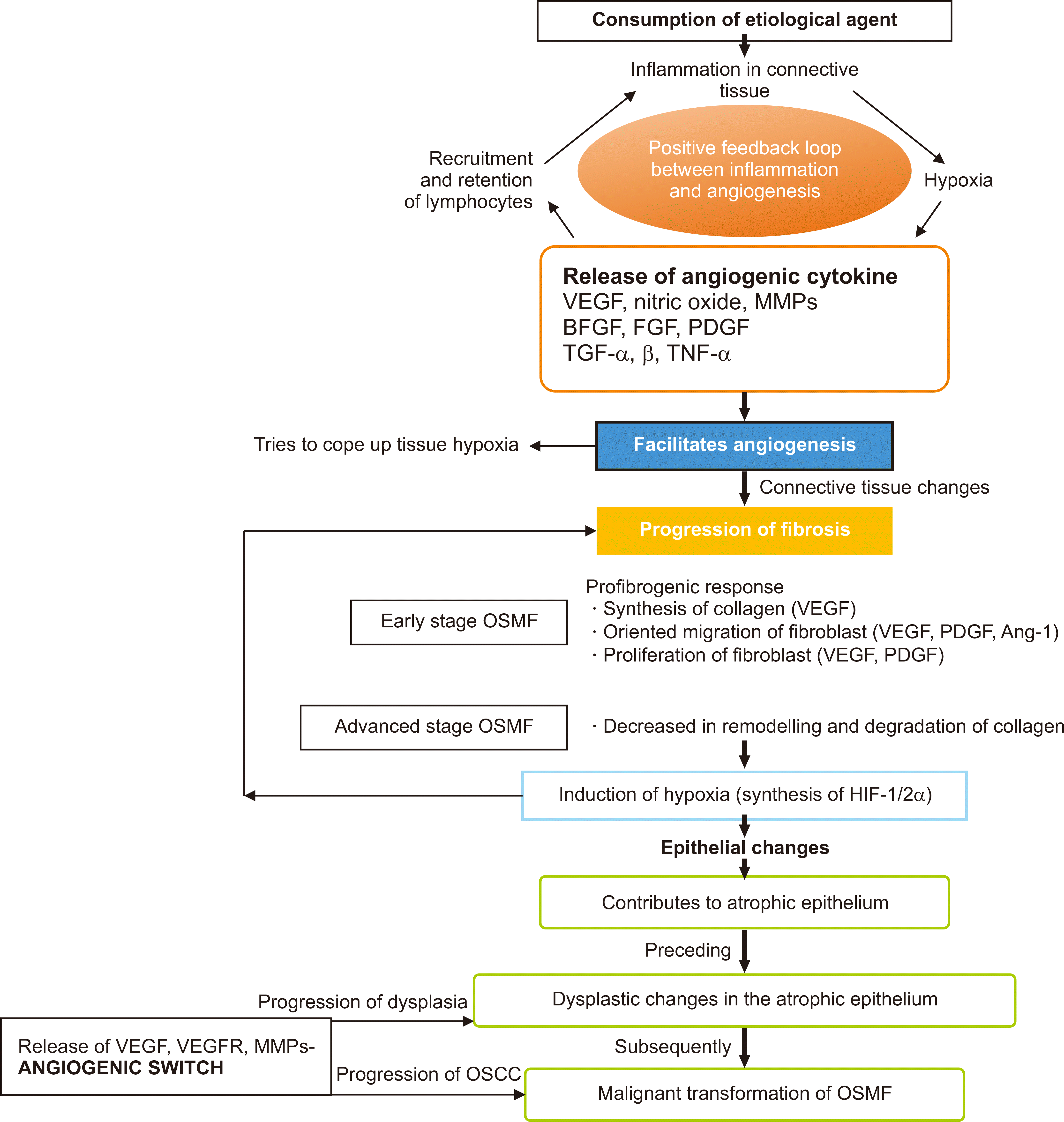1. Rajendran R. 1994; Oral submucous fibrosis: etiology, pathogenesis, and future research. Bull World Health Organ. 72:985–96.
12. Madhavan Nirmal R, Veeravarmal V, Bhavani S, Srinivasan P, Austin RD. 2016; Evaluation of micro-vessel density (Mvd) and vascular endothelial growth factor (Vegf) as possible indicator of malignant transformation in oral submucous fibrosis. J Dent Med Sci. 15:72–7.
13. Rajendran R, Paul S, Mathews PP, Raghul J, Mohanty M. 2005; Characterisation and quantification of mucosal vasculature in oral submucous fibrosis. Indian J Dent Res. 16:83–91.
14. Garg N, Mehrotra RR. 2014; Morphometric analysis of epithelial thickness and blood vessels in different grades of oral submucous fibrosis. Malays J Pathol. 36:189–93.
16. Singh M, Chaudhary AK, Pandya S, Debnath S, Singh M, Singh PA, et al. 2010; Morphometric analysis in potentially malignant head and neck lesions: oral submucous fibrosis. Asian Pac J Cancer Prev. 11:257–60. .
25. Gadbail AR, Chaudhary MS, Sarode SC, Gondivkar SM, Belekar L, Mankar-Gadbail MP, et al. 2019; Ki67, CD105 and α-smooth muscle actin expression in disease progression model of oral submucous fibrosis. J Investig Clin Dent. 10:e12443.
https://doi.org/10.1111/jicd.12443. DOI:
10.1111/jicd.12443. PMID:
31325233.

26. Gadbail AR, Chaudhary MS, Sarode SC, Gawande M, Korde S, Tekade SA, et al. 2017; Ki67, CD105, and α-SMA expressions better relate the binary oral epithelial dysplasia grading system of World Health Organization. J Oral Pathol Med. 46:921–7.
https://doi.org/10.1111/jop.12612. DOI:
10.1111/jop.12612. PMID:
28672080.

39. Desai RS, Mamatha GS, Khatri MJ, Shetty SJ. 2012; Immunohistochemical expression of vascular endothelial growth factor (VEGF) and its possible role in tumour progression during malignant transformation of atrophic epithelium in oral submucous fibrosis. Curr Angiogenes. 1:347–53.
https://doi.org/10.2174/2211552811201040347. DOI:
10.2174/2211552811201040347.





 PDF
PDF Citation
Citation Print
Print





 XML Download
XML Download